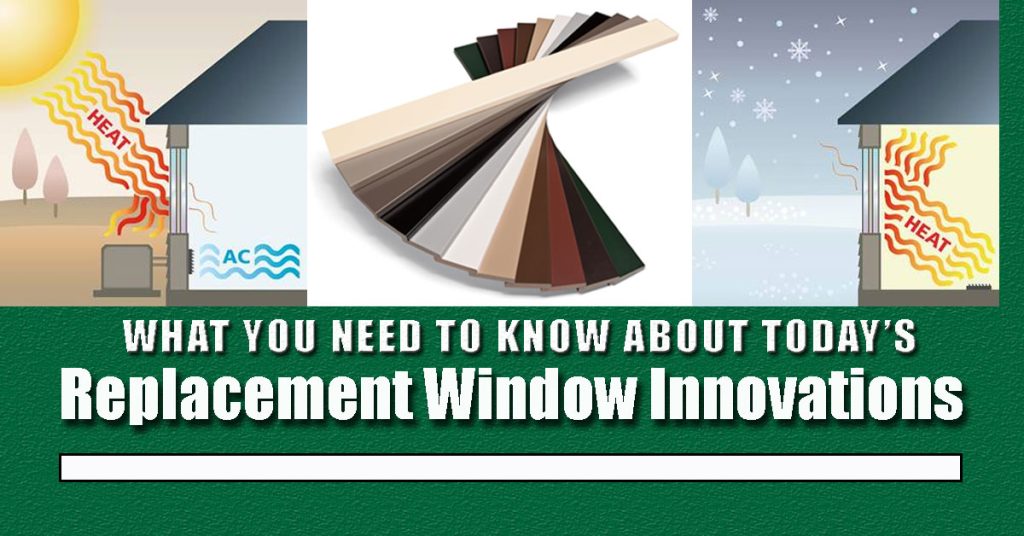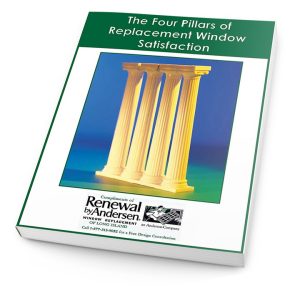MENU


Today, most of us on Long Island don’t give a second thought to our windows unless we have a problem with them like a broken pane or bad drafts. But high-quality home windows haven’t always been around – and modern replacement windows have only been on the scene for a few decades. The last 50 or so years have seen some remarkable changes in window technology and design that totally transformed the way we see the world from both sides of the glass. Renewal by Andersen continues to look for innovative solutions that improve energy-efficiency and performance by building on the lessons learned in the past and exploring possibilities for the future. Here is a look back at some of the innovative designs, framing materials and manufacturing processes from the past that make modern replacement windows more than just fixtures that protect us from the raging wind and scorching sun.
Alastair Pilkington, who worked for Pilkington Brothers in the United Kingdom, is credited with the breakthrough that we call float glass. His process involved pouring molten glass over tin, also heated to extreme temperatures. This made it possible to produce larger, more uniform sheets of level glass. Without this innovative solution, we wouldn’t enjoy some of the factory applied technology that blocks UV rays and reduces the amount of light that passes through the window panes. Virtually all home windows today are constructed with high-quality float glass as the foundation. We’re sure that Mr. Pilkington, who passed away in 1995, would be proud to know his innovation continues to give Long Island residents more solutions to enhance our daily lives.
Although the original patent for insulated glass was issued the same year that General Joseph E. Johnson surrendered to General Sherman at Durham Station, effectively ending the Civil War, (circa 1865), insulated glass didn’t become widely available until the post WWII era. The 1960s saw about half of all home’s using insulated glazing. Four decades later, some 90 percent of all homes were furnished with insulated glass, most using steel or rubber spacers between the panes. Today, low-E glass, modern spacers affixed to the panes and argon gas filling deliver superior insulating properties that reduce sound and heat transfer effectively.
Vinyl was a popular, “new” window component for replacement windows in the mid-sixties, and later in new-home construction near the end of the 1980s. Vinyl seemed like the greatest thing since sliced bread, but the light-weight, low-maintenance material wasn’t as strong as wood or metal and proved to be “to flimsy” to support the weight of glass, especially in larger windows. Andersen Windows, our parent company, came up with a solution that incorporated the low-maintenance vinyl surface with a strong wood interior. Perma-Shield vinyl clad windows are still popular today. The introduction of Fibrex (1992) as a home window construction component, started a new era. Andersen’s initial use of the new material was to strengthen subsills in hinged doors. A few years later, the company started using Fibrex in some of their double-hung windows, giving homeowners an option that was designed to stay beautiful for decades, without sagging, pitting, rotting or failing due to weather elements.
Today, along with energy-efficient glass, frames that never need resurfacing and insulated glass units that improve indoor climate control, you can also customize your new windows in dozens of ways. You don’t have to always replace your existing windows with square and rectangular standards. You have options to replace a “boring box” with a geometric shape that adds a bit of visual texture, or choose an easy-to-clean tilt-in double-hung window so you don’t have to waste time going back and forth to clean both sides of the glass. Exclusive hardware finishes allow Long Island homeowners to add subtle details that give their windows an elegant look or simply melt into the overall window appearance without drawing special attention. Window performance has improved dramatically over the past few decades, too. And, now replacement windows look beautiful while keeping unwanted insects outdoors and blocking ambient sounds from the neighborhood. Since every window is built to your exacting specification, you decide how you want your windows to look, and whether you want to capture all the natural light available or reduce the light levels in certain rooms. There has never been a better time in the history of windows than today to design the perfect windows for your home.
Ready to find out how modern replacement windows can improve the value and comfort of your Long Island home? Just take a minute to fill in the short form on this page to request a brochure or call us toll-free to schedule an in-home consultation with a window specialist. Dial (866) 609-5033 now.

Learn Everything You Need to Know BEFORE Buying Replacement Windows Click Here to Download Now!